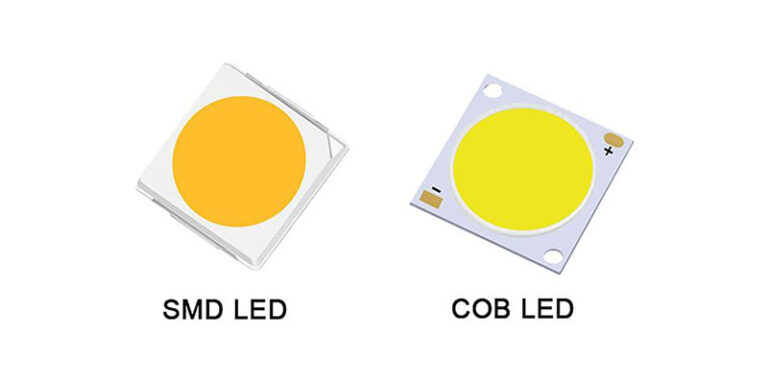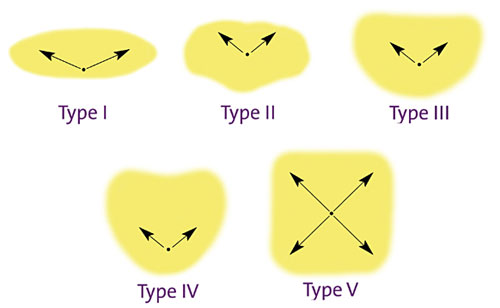It has been known that south-facing solar panel (In the Northern Hemisphere) can get the most out of sunshine.
And when it comes to orienting solar panels, most people will simply choose the south which the compass points to.
However,
this approach is absolutely wrong.
Because you will only be able to find out the magnetic south with it.
Actually,
In any PV system related project, we tend to set up solar panels to face the solar south rather than the magnetic south.
Although doing this only brings about a 3% improvement in energy collection, it will be a big deal if your solar array is huge or your extreme condition requires getting as much energy conversion as possible.
Now, the questions are:
- How can we ascertain the true solar south?
- What’s the difference between “True Solar South” and “Magnetic South”?
Well, today I am going to make it easy for you
Basic Knowledge: True Solar South vs. Magnetic South
Before we talk about the methods of finding true solar south, let’s go through the basic knowledge quickly
- What is “True Solar South”?
- What is Magnetic South?
- Is there any difference between them?
This can be easily understood with the help of the following image (pic.1):
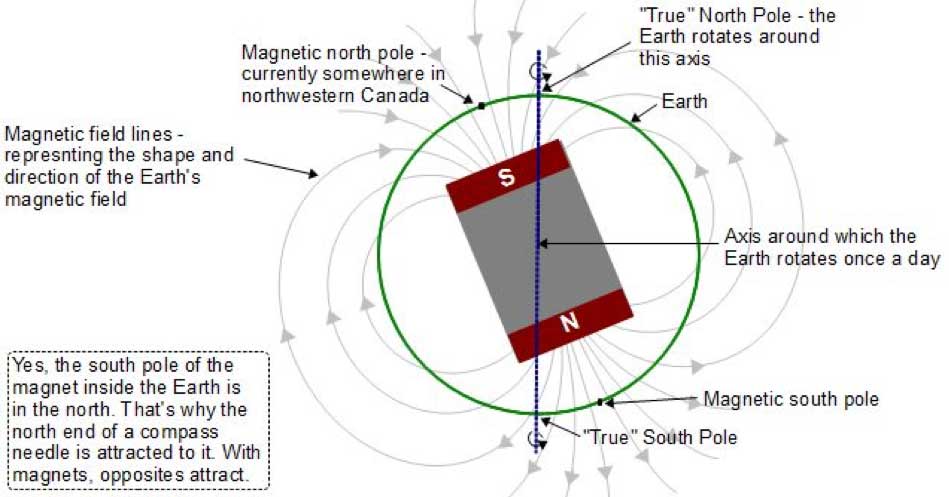
In fact,
There is a giant magnet in the earth.
Its magnetic South Pole is around the Earth’s South Pole, while its magnetic North Pole is around the Earth’s North Pole (Refer to pic.2).
This big magnet rotates along with the Earth. However, its axis is not aligned with the Earth’s, although they are pretty close to each other. The declination is approx. 14 degree.
For better understanding:
When the compass needle points at the south, it is actually aligning with the Magnetic South Pole and not the true South Pole.
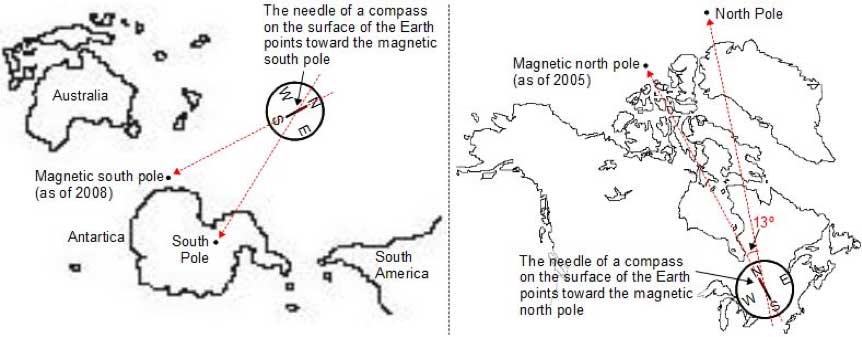
We often refer to the direction of the Earth’s South Pole as the true south or the true solar south, while the direction of the magnetic south pole is referred to as the Magnetic South.
In the solar energy-related industry, accurately locating the true south means a lot to the solar PV system.
Lucky for you,
we have 4 proven practical methods you can use today to help you when adjusting your solar panel to ensure you find the right direction and improve the efficiency of your solar powered system.
Now, Let’s dive into the content step by step.
Method #1: The shortest shadow method
The shadow of an object will be shortest when the Sun is highest at noon, and at this moment, the direction of the shadow line is the true solar south.
This method involves simply finding out the shortest shadow at noon according to this theory,
Now, let’s dive into the steps

Simple steps:
1. Set a straight stick on a flat ground in the morning, toward noon – it is important that the straight stick is set perpendicular to the horizontal, and the ground should be as flat as possible, because a tilt-mounted stick or uneven ground will produce a faulty result of the shortest shadow.
2. Mark the shadow end on the ground every few minutes – as time passes by, the shadow cast by the stick will move. You need to leave a mark at the end of the shadow on the ground every 10 – 20 minutes, these marks will finally form a curve.
3. Find out the shortest shadow line – draw a line to connect those marks to the point where the stick touches the ground. By now, the shortest line is evident.
4. Reveal the true solar south – now that we have marked that special line we concluded in the third step, the direction of the Solar South has been revealed. You could then adjust your solar panels to align with this direction.
Method #2: Using a shadow at solar noon
This could be the simplest way – it takes far less time than Method #1
Let’s start with the question: what is solar noon?
Solar noon is the local time when the sun rises to its highest point at your location, and at this time, the sun is crossing your local meridian.
Instead of spending several hours standing outside and measuring the shortest shadow, in method #2, all you have to do is to find out your local solar noon, then go out at that time to check the direction of the shadow of an upright object on the ground.
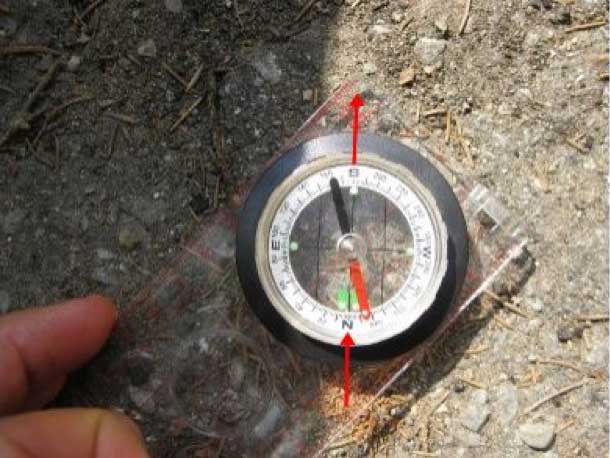
Here, you may still need to raise a straight stick vertically on the ground, but you can refer to Method #1 Step 1 for that.
We will introduce 2 feasible ways to calculate your local solar noon.
Now, let’s dive right in.
Online solar noon calculator A
Simple steps:
1. Visit the website http://www.spot-on-sundials.co.uk/calculator.html and input your location, longitude and time zone (I will use my location, Shenzhen, China as an example)
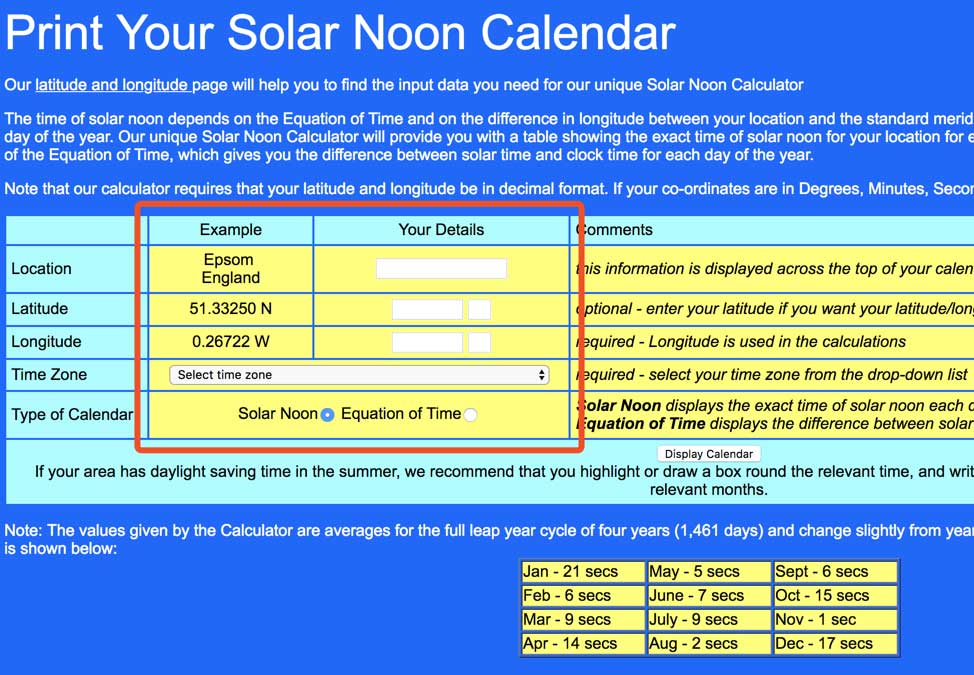
2. Get your longitude – open the Compass APP on your phone as below – you can see my location is Shenzhen and Longitude is 113° 56’ 27” E

3. Fill in the form with the required data and click on Display Calculator
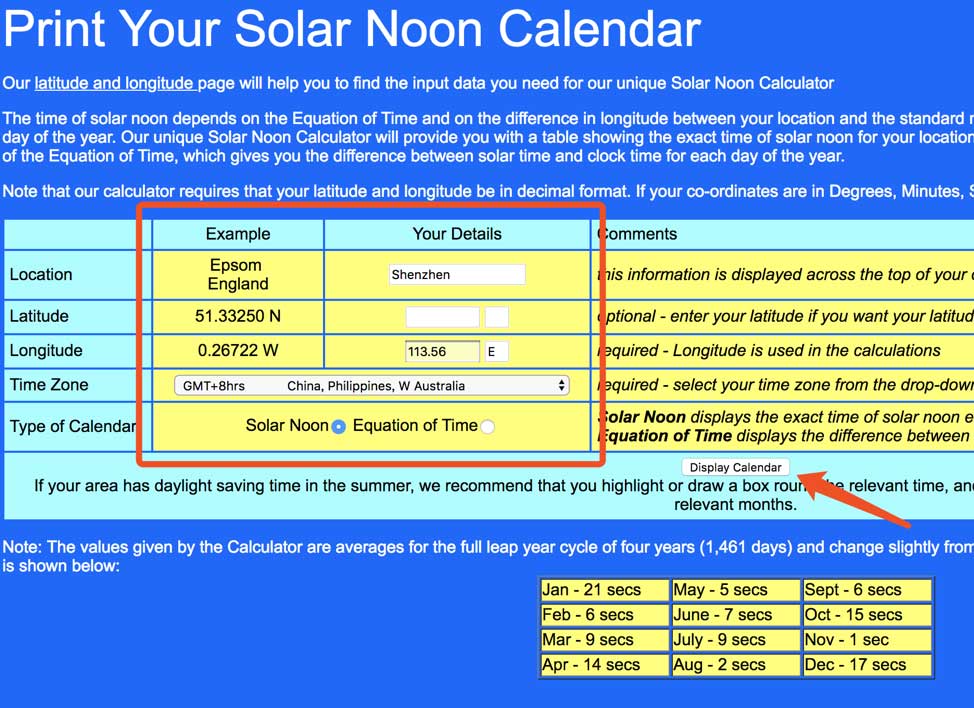
4. You will be redirected to the page below. Click on “continue”
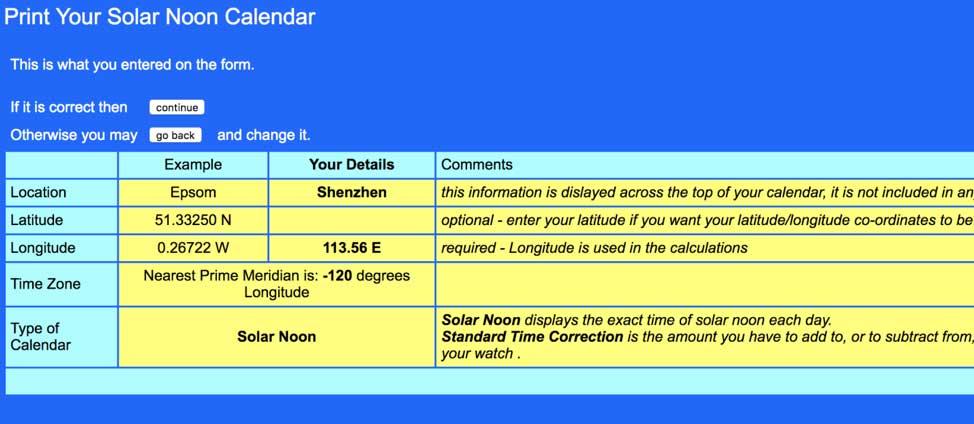
5. The solar noon calendar would be generated as below – this special calendar has listed all the solar noon for each day of the year. Assuming your team would go out to carry out this task on Nov 30th, 2018, the solar noon on that day is 12:14 pm

Online solar noon calculator B
Follow the simple steps below:
1. Visit the website http://suncalc.net/
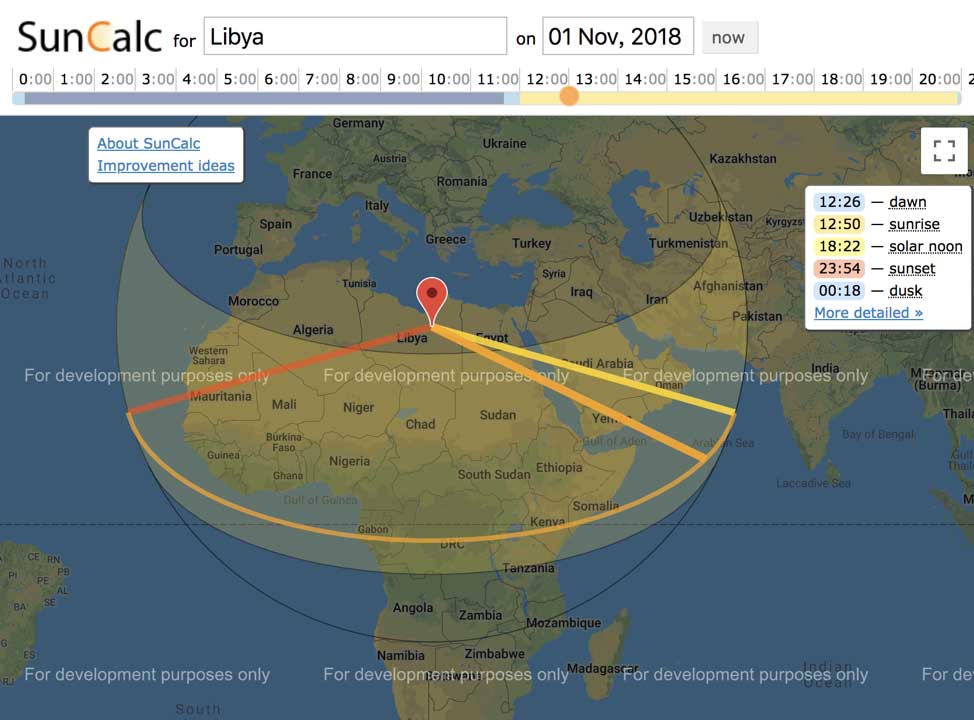
2. Drag the red mark to your address on the map. The solar noon will be displayed on the right side simultaneously.
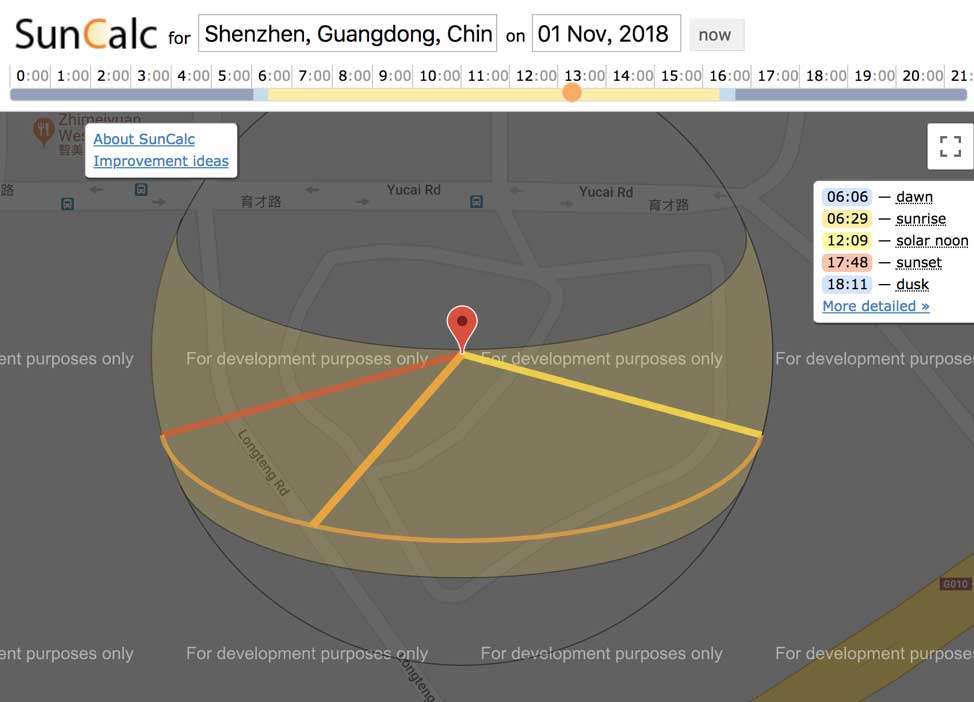
3. Select the date, for instance, Nov 30th, 2018
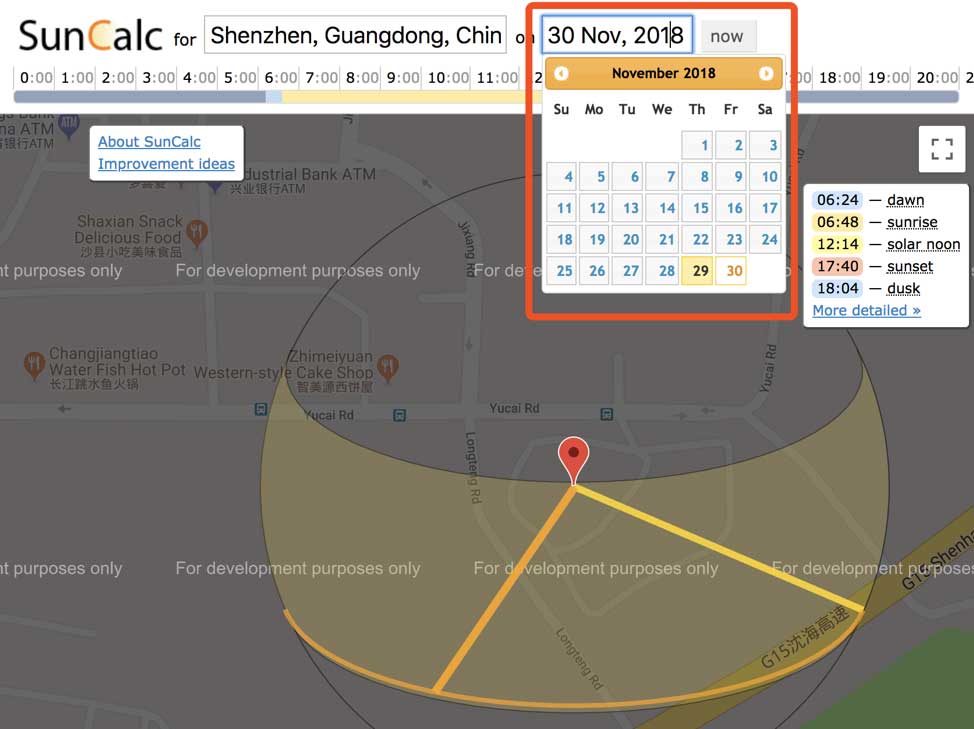
4. You will get the same solar noon 12:14 as from calculator

Since both calculators, A and B, show the same time 12:14, then your team can go outside at that time to mark the true solar south easily.
Try the steps above, and let me know if the two calculators also generate the same results in your city.
Method #3: The magnetic declination method
Seeking out truth south according to magnetic declination may be the most accurate method.
As we know, the magnetic south that a compass points to slightly deviates from the true south – the direction that is along a meridian towards the South Pole. The deviation angle between them is called magnetic declination.
The magnetic declination changes every year because magnetic poles are shifting each year. However, the Earth’s pole is not moving. Chances are we should go to authority online database to obtain up-to-date data of declination.
Let’s go through the simple steps:
1. Visit the authority site NOAA, and fill in the required data – taking my city Shenzhen as an example, my latitude and longitude are 22.40 N and 113.56 W respectively (refer to the images above). Select Nov 30, 2018, as the date, since my team plans to do this job on that day, and click on the calculate button.

2. Your magnetic declination would be displayed – from the results, you can see that my declination in Shenzhen China is 9.02 degree East.
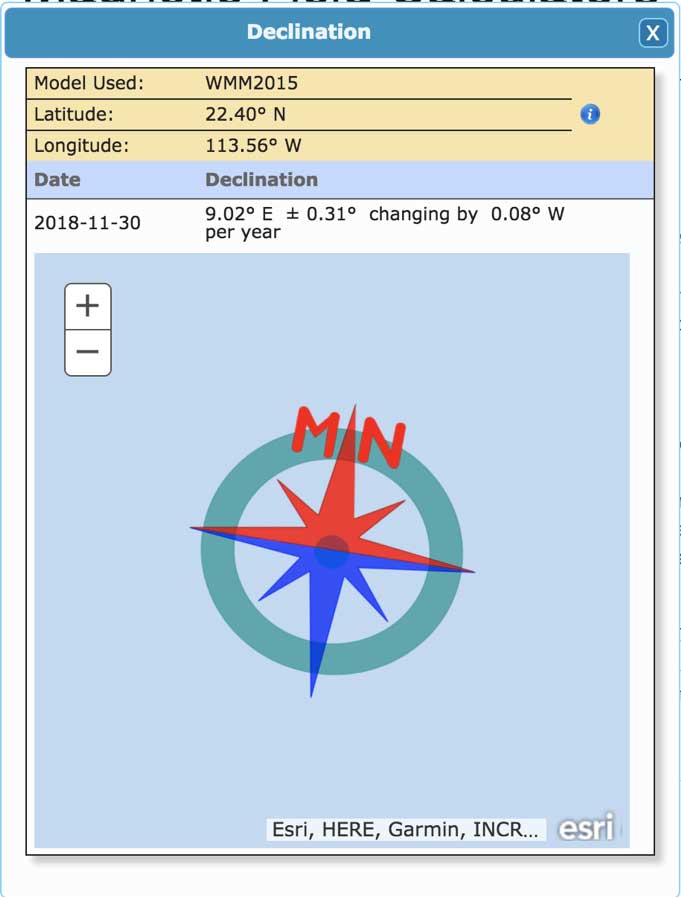
3. Prepare the compass – we need a compass with degree scales. Place it on a horizontal surface, and adjust the needle to align with the south-north scale as below. Its black hand will point to the magnetic south
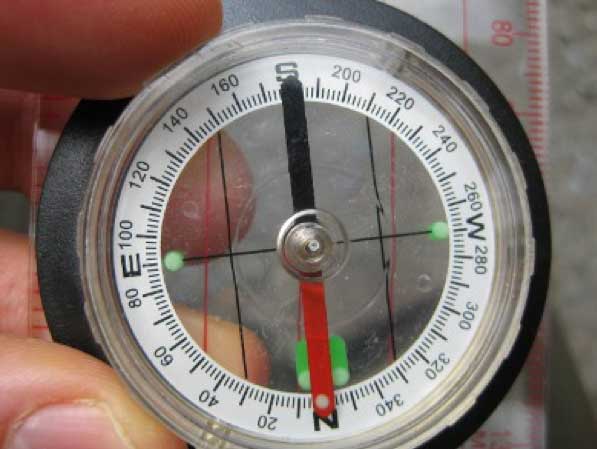
4. Rotate the compass horizontally according to the declination – my declination is 9.02° East, so we rotate 9.02 degree counterclockwise. Now, the ‘S’ on the scales will point to the true solar south. (Refer to picture below)
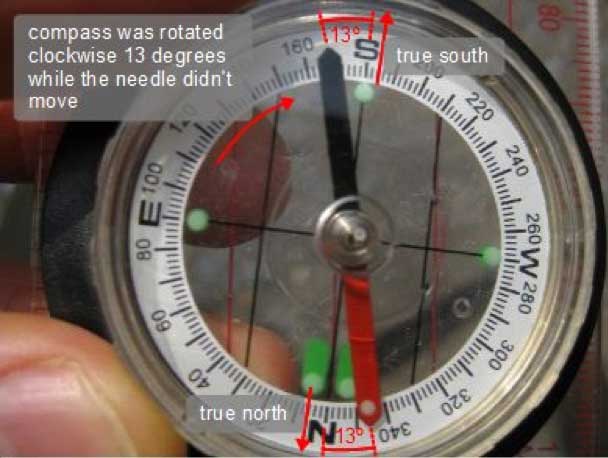
Method #4: the Polaris method
If you live in the northern hemisphere, you can also use the Polaris to locate the true north or south.
The Earth’s imaginary rotation axis always passes through the Polaris, so you may find she does not move in the sky, and the direction towards the Polaris is always the true north.
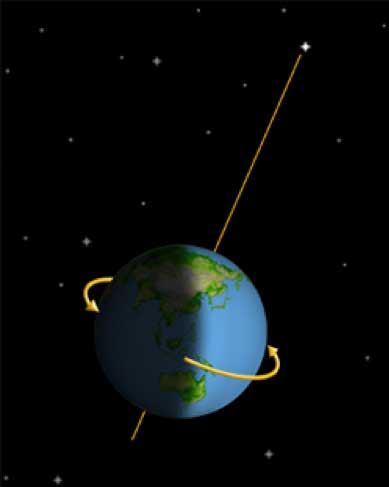
With the basic knowledge above, let’s walk down the simple steps:
1. Identify the Polaris – Commonly, finding the Polaris requires the help of “Big Dipper” and “Little Dipper” in the northern sky. Below are 3 helpful clues
- The Polaris belongs to “Little Dipper”, together with 6 other stars
- The Polaris doesn’t move
- The “Big Dipper” constellation revolve around the Polaris all year round.

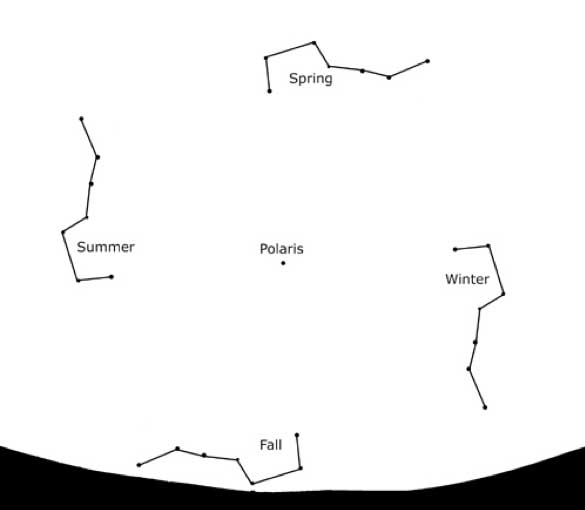
2. Set up the solar panel – line up the seam between 2 solar panels with the Polaris as instructed in the following picture, and the solar panel will be facing the true south

Some people like the Polaris method most, because it neither requires any calculation nor marking shadow for a few hours.
Which one do you think is the best method? And do you have any other more efficient method(s)?
We love to hear from you in the comments.


